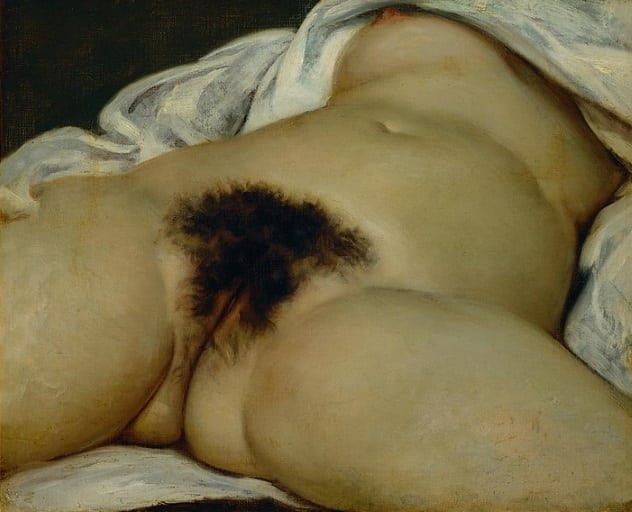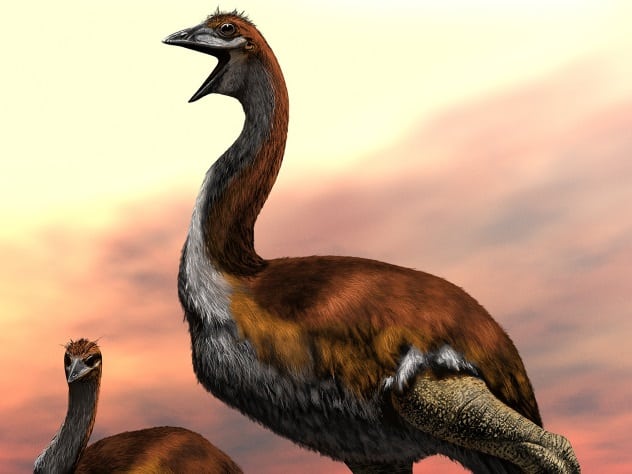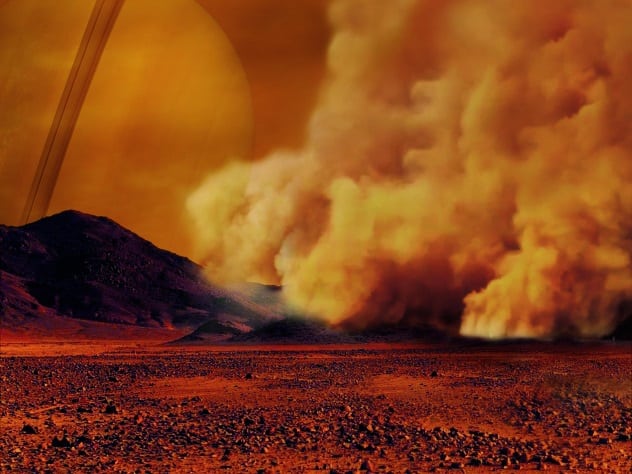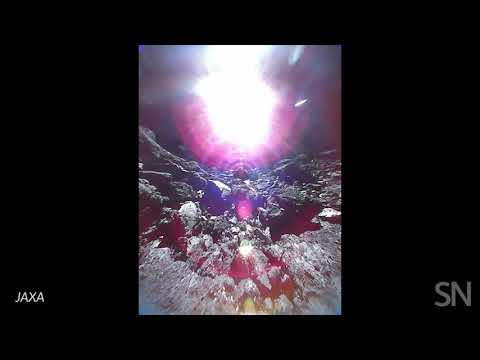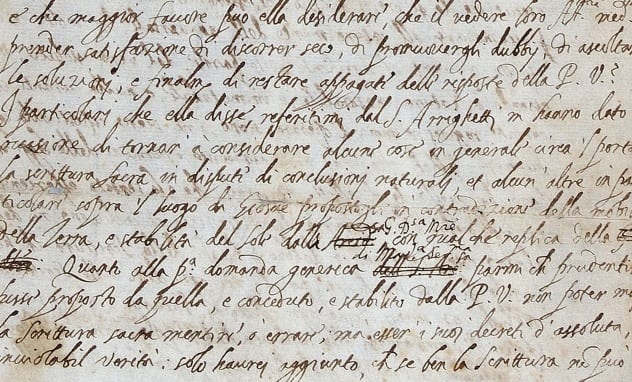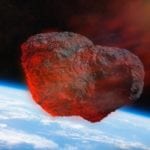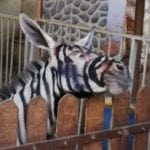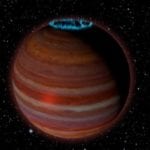It was an exciting week for space enthusiasts. Further below, you will be able to see the first images of a dust storm on Titan and the first-ever video shot on an asteroid. There are also a few historical mysteries to discuss, some that have been elucidated and others that just appeared. We talk about the identity of the model who posed for Gustave Courbet’s scandalous painting and the letter that got Galileo in trouble with the Inquisition.
10 Hitler Runs For Mayor In Peru
Hitler is running for reelection as mayor of a small Peruvian town despite a challenge from Lennin. Between 2011 and 2014, Hitler Alba served as mayor of Yungar, a farming town in the Central Andes. Now, he is seeking a new term after overcoming an obstacle from political detractor Lennin Vladimir Rodriguez Valverde, who unsuccessfully tried to keep him off the ballot. Obviously, Alba knows of the “colorful” history behind his first name, although he claims that his father was unaware when he christened him. The mayoral candidate considered changing his name but eventually decided to accept it. Alba does stress that he doesn’t share anything with his Nazi counterpart other than the name, instead touting himself as “the good Hitler.”[1]
9 How To Think Like A Human
An experiment by researchers from MIT and the University of Pennsylvania found that the most likely word to distinguish a person from a robot is “poop.” Back in 1950, British computer scientist Alan Turing developed the Turing Test. Any machine that passes it is considered to exhibit intelligent behavior indistinguishable from humans. Now, psychology researchers developed what they call a “Minimal Turing Test,” where only one word could be used to separate man from machine.[2] Their large-scale experiment involved 3,000 participants. First, 1,000 of them presented words that they would use to convince others that they weren’t robots. Their 400 or so suggestions were grouped into ten distinct categories. Some of the most popular choices included “love,” “compassion,” “mercy,” “empathy,” and “banana.” The testers then took the most popular word from each category and showed the other 2,000 participants random pairings of these words. They had to select which choice they thought was made by a human and which one by a robot. The word the test subjects considered most humanlike was “poop.” Just to clarify, no actual artificial intelligence was involved in the Minimal Turing Test, which was more about human psychology than AI behavior.
8 Put A Spell On It
Beyonce is facing accusations of “extreme witchcraft,” courtesy of her former drummer, Kimberly Thompson. Thompson initially requested a temporary restraining order against the singer, which was denied by the Los Angeles Superior Court on September 19. Afterward, she filed for a civil harassment restraining order. Thompson is accusing Beyonce of using her powers of witchcraft and black magic to run surveillance on her and control her finances. Furthermore, the drummer also claims that Beyonce used spells of sexual molestation and even murdered Thompson’s pet kitten.[3] She has not given a motive as to why Beyonce would be doing this to her. A hearing for the restraining order is scheduled for October 11. Thompson confirmed the accusations after the story broke. As of this writing, Beyonce’s camp has not issued a statement.
7 Nude Model Identity Revealed?
In 1866, French Realist Gustave Courbet painted one of his most notable (and most controversial) works: L’Origine du Monde. The painting features a close-up of a woman’s genitals and abdomen while she lies on a bed with her legs spread apart. Her head is out of view, leaving the identity of the model a mystery . . . until now. For a long time, it was believed that the woman in the painting was Joanna Hiffernan, an Irish model who served as a muse to both Courbet and James Whistler. Courtesan Marie-Anne Detourbay was also a likely suspect. However, historian Claude Schopp claims to have documentary evidence that the woman in the painting is Constance Queniaux, a former ballet dancer with the Paris Opera.[4] By the time of the painting, Queniaux had retired as a dancer and was the mistress of a Turkish-Egyptian diplomat. Schopp stumbled upon her identity while browsing correspondence between writers George Sand and Alexandre Dumas concerning the dancer. Dumas wrote the line: “One does not paint the most delicate and the most sonorous interview of Miss Queniault [sic] of the Opera.” Confused by the word “interview,” Schopp went back and looked through the original manuscript and saw that Dumas actually wrote “interior.” Further suggesting an intimate relationship between Queniaux and Courbet was the fact that, after her death, the former ballerina bequeathed a painting of the French artist featuring red and white camellias. The camellia is a flower closely associated with courtesans, and historian Sylvie Aubenas believes Courbet gifted the painting as thanks for modeling for L’Origine du Monde.
6 The Largest Bird In The World
Scientists from the Zoological Society of London (ZSL) hailed Vorombe titan as the largest bird that has ever existed. The animal lived on Madagascar between 500,000 and one million years ago and could weigh up to 800 kilograms (1,760 lb) and measure 3 meters (10 ft) tall. V. titan belonged to a group of animals called elephant birds. While scientists knew that one of these feathered giants was the largest bird in history, debates have raged on for decades over which one held that title. The team from ZSL analyzed and measured hundreds of specimens from museums all over the world, which led to a taxonomic reassessment. Up until now, the evidence suggested that elephant birds consisted of 15 species split across two genera. ZSL researchers indicated their findings showed three genera and at least four distinct species.[5] This meant that some of the previously identified elephant birds were the same species described twice. V. titan used to actually be known as Aepyornis titan, described by C.W. Andrews in 1894. It was subsequently dismissed as just a large example of Aepyornis maximus. However, the ZSL team concluded that it was not only a distinct species of bird but the largest one. They renamed it to Vorombe titan.
5 The Thieves In The Weeds
It seems that the weed industry doesn’t attract the most conscientious criminals. Earlier this month, we talked about three thieves who tried to rob a Canadian cannabis dispensary, only to be foiled by a bong-swinging clerk. This time, we have two separate cases that warrant mention. First, there was a smash-and-grab at Native Roots, a weed shop in Colorado Springs. Two teens crashed a stolen van through the entrance of the store, broke the display cases, and made off with bundles of marijuana. They left the van there and escaped in a different getaway car, where one or two other accomplices were waiting. However, the owner of the shop later revealed that they didn’t keep real marijuana in the display cases. Instead, the thieves stole bunches of premium-quality oregano.[6] Then there’s Humble Roots Horticulture in Colchester, Vermont. They’ve had several incidents since the state legalized weed, mostly because robbers don’t know the difference between marijuana and hemp. The farm only grows hemp used to make oil. Their plants contain almost no THC and won’t get you high. The local police department even posted an advisory on their Facebook page to deter would-be thieves, informing them that industrial hemp might be good for making rope, but you can’t smoke it.
4 The Storms Of Titan
Saturn’s moon Titan has become the third world known to have dust storms, after Earth and Mars. This information comes to us courtesy of the Cassini spacecraft, which studied the gas giant and its many satellites. Its mission might have ended in 2017, but we are still processing all the data sent back to Earth. According to a paper recently published in Nature Geoscience, Titan has an active dust cycle in which organic dust gets raised from large dune fields around the moon’s equator.[7] Just a few years ago, Titan was a complete mystery to us, due to its thick atmosphere. Now, we know that the satellite has bodies of liquid methane on its surface. The substance evaporates and condenses into clouds, which rain down methane and repeat the cycle. In fact, during the equinox, massive cloud formations can lead to powerful methane storms around Titan’s tropical regions. Cassini observed several of these storms during its flybys. Paper lead author Sebastien Rodriguez from Paris Diderot University thought he was looking at one of them when he was examining images taken during Titan’s 2009 northern equinox. However, a closer investigation revealed that the formations weren’t methane clouds or surface features like ice lavas. Given that they appeared over Titan’s dunes, the only plausible explanation was dust storms.
3 The Mystery Of The Hand Of Preles
Swiss archaeologists are confounded by the discovery of an artifact dubbed “the hand of Preles,” after the village where it was found by treasure hunters. The hand is considered to be Europe’s oldest metal body part. The relic is made out of bronze, has a gold cuff, and is slightly smaller than life-size. Scientists were able to radiocarbon-date a bit of glue used to keep the cuff in place and determined that the hand is around 3,500 years old. Two treasure hunters initially found the artifact in 2017 near Lake Biel, along with a bronze dagger and rib bone. They turned the loot over to the authorities and took them back to the site this spring to investigate further. The team from the Bern Archaeological Service excavated for seven weeks and found a grave with the remains of a middle-aged man. Also buried were a few bronze accessories, pieces of gold foil that matched the cuff, and one of the bronze fingers broken from the hand.[8] There was little doubt that this was where the hand of Preles came from. The sculpture will go on display next month. Until then, archaeologists are still puzzling over its purpose. The inside of the hand has a socket, which could mean that it was mounted on a statue or a scepter. Others have speculated that it was used in a ritual or even that it acted as an ancient prosthesis.
2 A Movie That’s Out Of This World
The Japan Aerospace Exploration Agency (JAXA) revealed the first-ever movie shot on an asteroid. Last week, the Hayabusa2 spacecraft reached asteroid 162173 Ryugu following an almost four-year journey. It also deployed two rovers to explore the rock’s surface. Although there was some concern that the asteroid’s exterior was rougher than expected, the rovers made a safe landing and began sending back images. Rover 1B even transmitted the first video footage filmed on the surface of an asteroid.[9] The “movie” consists of 15 frames captured over a period of an hour and 15 minutes. The bottom half of the screen shows the rocky surface of the asteroid, while the upper half mostly shows a sunlit lens flare. Unlike many other spacecraft, Hayabusa2 is on a sample-collecting mission and, hopefully, will make its way back to Earth at the end of 2020. Ryugu is not just any asteroid but rather a primeval remnant from the early days of our solar system. Studying samples from it could provide us with clues about the origins of Earth and other planets.
1 Galileo’s Letter
A fascinating bit of science history was recently uncovered by chance when a researcher stumbled upon the original letter in which Galileo argued against the geocentric model promoted by the Catholic Church. Italian polymath Galileo Galilei championed the idea developed by Copernicus that the Earth orbited the Sun. This landed him in hot water with the Church, and in 1633, he was condemned for heresy and sentenced to house arrest. It could have been worse, though, as Galileo could have ended up on a pyre. When the Church got hold of a copy of his letter touting heliocentrism, he knew he had a target on his back. There was a tamer version of the letter which used more passive language. For example, instead of calling certain Biblical passages “false,” the astronomer said they “look different from the truth.” He shared this version with his friends and claimed that it was the original. Galileo argued that the inflammatory letter was doctored by the Inquisition to build their case against him. For centuries, we knew of both versions, but we weren’t sure which one was truly the original. Who edited the letter: the Inquisition or Galileo himself? It appears that the scientist was the one who made the modifications.[10] The recently discovered document appears to be the original, dated to December 21, 1613. It has Galileo’s signature, matches his handwriting, and is littered with various corrections and amendments, indicating that it was the first draft. The letter sat in the archives of London’s Royal Society for over 250 years. Historian Salvatore Ricciardo from the University of Bergamo in Italy found it by chance in a misdated catalogue.



